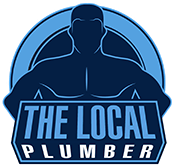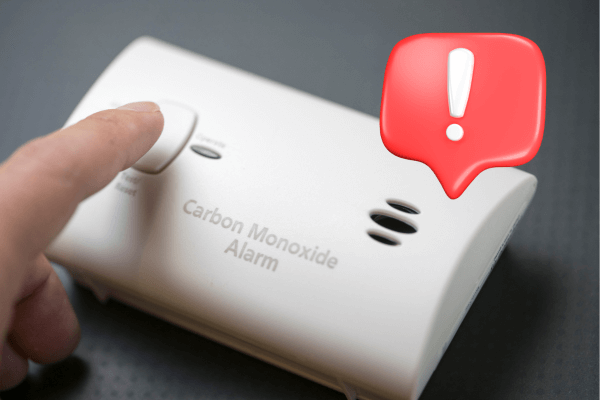Carbon monoxide (CO) is an invisible threat that can lurk in any home or business, posing significant health risks to those exposed. Understanding the sources, dangers, and preventative measures against CO leaks is crucial for maintaining a safe living and working environment. Our emergency plumbers here at The Local Plumber have compiled this article which highlights insights into carbon monoxide leaks and the importance of regular testing.
What Is Carbon Monoxide?
Carbon monoxide is a colorless, odorless gas produced by burning any fuel. Therefore, any home appliance that burns fuel, such as stoves, heaters, or cars, can potentially be a source of CO. Due to its undetectable nature, CO can accumulate to dangerous levels unnoticed, making it a silent killer.
If you suspect you or someone on your household may have CO poisoning, please do the following immediately:
- Turn Off Gas Appliances: Shut down all gas appliances immediately (e.g stoves, ovens, gas hot water heaters, gas heaters)
- Ventilate: Open all doors and windows to air out the area.
- Evacuate: Leave the premises, keeping ventilation points open if feasible.
- Seek Medical Help: Contact medical professionals without delay or dial emergency services if necessary. Call NURSE-ON-CALL on 1300 60 60 24 (24/7). In an emergency call 000.
These steps are crucial for safety and health in suspected CO exposure situations.
Dangers & Symptoms of CO Poisoning
Recognizing the symptoms of carbon monoxide (CO) poisoning is crucial for timely intervention and prevention of serious health consequences. Here’s a concise list of common symptoms associated with CO exposure:
- Headache
- Dizziness
- Weakness
- Nausea or vomiting
- Shortness of breath
- Confusion
- Blurred vision
- Loss of consciousness
These symptoms can vary in severity and often resemble those of the flu, which makes it challenging to diagnose CO poisoning without a CO detector. If you suspect CO exposure, it’s critical to get fresh air immediately and seek medical attention.
What Are the Sources of Carbon Monoxide?
To ensure your home remains safe from carbon monoxide (CO), awareness of potential CO sources is key. Here are some appliances and scenarios that could pose a risk:
- Furnaces and Boilers: These can leak CO if they malfunction or are improperly maintained. Annual inspections are advised.
- Gas Stoves and Ovens: Improperly adjusted or leaking gas lines can emit CO, emphasizing the need for correct installation and maintenance.
- Hot Water System Heaters: Gas-powered water heaters need regular checks to prevent CO leaks, especially those that are older or heavily used.
- Portable Generators: Using these in enclosed spaces can lead to CO build-up; always operate them outdoors and away from windows.
- Gas Fireplaces: Ensure venting systems are clear and the fireplace is properly maintained to prevent CO emissions.
- Attached Garages: Running vehicles in or near an attached garage can allow CO to enter your home; ensure good ventilation and never leave a car running in a closed garage.
- Blocked Vents or Chimneys: Can prevent CO from escaping, leading to accumulation inside the house. Annual inspections can keep these clear.
Understanding and monitoring these potential sources can significantly reduce the risk of CO poisoning, ensuring a safer environment for you and your loved ones.
Preventing Carbon Monoxide Poisoning
Preventative measures include installing CO detectors on every level of your home, ensuring appliances are regularly serviced by professionals, and maintaining proper ventilation in rooms with fuel-burning appliances.
To detect a potential CO leak, monitor for these signs even before setting up CO detectors:
- Soot Marks: Visible around gas appliances indicating incomplete combustion.
- Smoke Buildup: In wood fireplaces, indicating poor ventilation.
- Condensation: On windows near gas appliances, a sign of CO presence.
- Flame Color: Yellow or orange flames on a gas stove, instead of blue, suggest a leak.
- Pilot Lights: Frequent outages or flickering can signal a CO issue.
These indicators help identify CO leaks, underlining the importance of prompt action and CO monitoring.
CO Detectors: Your First Line of Defense
Selecting the right CO detector and knowing where to install them can significantly enhance your safety measures. Detectors should be placed near sleeping areas and according to manufacturer’s instructions to ensure effectiveness.
The Importance of Professional CO Testing
While CO detectors are crucial, professional testing offers another layer of protection. Licensed plumbers and heating technicians can assess your home or workplace for CO leaks, ensuring all appliances and venting systems are operating safely.
What to Do if You Suspect a CO Leak
If you suspect a CO leak, it’s important to act quickly. Evacuate the area, call emergency services, and contact a professional to inspect and repair the source of the leak.
Carbon Monoxide Plumbers Melbourne
Carbon monoxide leaks pose a significant risk, but with the right knowledge and precautions, they can be prevented. Regular maintenance of appliances, proper installation of CO detectors, and professional testing are essential steps in protecting yourself and your loved ones from this invisible threat.
For expert advice and professional testing services, trust The Local Plumber. Our gas fitting plumbers are equipped to handle all your plumbing and heating needs, ensuring your environment is safe from the dangers of carbon monoxide. Visit us at The Local Plumber for more information and to schedule a service.

